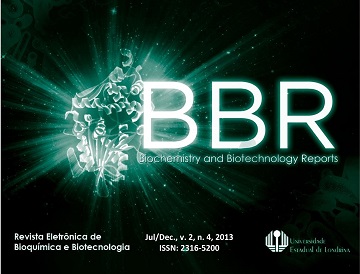Comparative modeling studies of lanosterol 14-alfa demethylase of Moniliophthora perniciosa
DOI:
https://doi.org/10.5433/2316-5200.2013v2n4p8Keywords:
Moniliophthora perniciosa, modelagem molecular, compostos azóis, CYP51Abstract
Moniliophthora perniciosa is the causative agent of witches’ broom, which affects the Theobroma cacao, causing great losses in cocoa production. The integrated management techniques available allow controlling the pest only partially. An important strategy to contain the witches’ broom is to study the interactions of the enzyme lanosterol 14-alfa demethylase (CYP51) of Moniliophthora with azole compounds. These compounds block the synthesis of ergosterol and consequently the fungal growth by the connection between the iron atom in the cofactor of this enzyme and the nitrogen atom of the azole. However, there is no study on the interaction of these compounds with the enzyme lanosterol 14-alfa demethylase of this pathogen. In this work, a model of the enzyme lanosterol 14-alfa demethylase of M. perniciosa was created by comparative modeling techniques. Then, the spatial arrangement of residues that comprise the catalytic site of the enzyme was identified. The results obtained are in agreement with the crystallographic CYP51. The results show that the built model can be used for molecular modeling and de novo design studies.


